There have been many names for the plant we now commonly know as Groundsel: Groundswilly, Groundie-Swallow, Grinsel, Grundsel, Grundy Swallow and Ground Glutton - all referring to ground and consuming. On a different tack, Old Man in the Spring is still used, but my favourite of all is Gnomes Shaving Brush.
It was in the year 1,000 the word ‘Grunduswelge’ first appeared, which translates as ‘ground swallower’ due to the plant’s reputation as a rapidly spreading weed. And rapidly it does spread! It produces about 25,000 seeds per plant and has the ability to bloom and seed up to 3 times a year.
However, in earlier texts from around 700AD, its name appears as ‘Gundae Selgiae’. ‘Gund’ was the word for ‘pus’ and ‘swelgan’ means to absorb or swallow. So in short: Pus Absorber. And that was what it was used for, the soft, fluffy seed heads made cooling, absorbing poultices for infected wounds.
Next to absorbing pus, Nicholas Culpeper, the famous 17th century physician and herbalist, recommends to use a weak infusion of Groundsel in Ale to help with “pains of the stomach”. Even in the 1990’s there were still references to using it in cases of severe constipation. Boiling Groundsel with lard was said to make an excellent laxative. As Roy Vickery, in his 1995 Dictionary of Plant-Lore put it, you will
“shit through the eye of a needle”
However it is now known that Groundsel can cause liver problems when taken too frequently. So on the one hand it could relieve your stomach cramps (if somewhat explosively), on the other, if you had it too often you were risking irreversible damage to your liver.
The Romans used to keep little birds in cages, either for their beautiful songs or their colourful plumage. Pliny the Elder (AD 23-79) didn’t approve and wrote in the world’s first encyclopaedia (published around 77AD) that Marcus Laenius Strabo was to blame for the popularity of the tradition.
“From him began our practice of imprisoning within bars living creatures to which Nature had assigned the open sky.”
Unfortunately his disapproval didn’t help the little birds. In the Middle Ages it continued to be fashionable amongst the aristocracy, especially in the women’s quarters. They kept chaffinches, goldfinches, greenfinches, siskins, bullfinches and from mid 1300’s onwards, canaries. The main food these little birds were given was Groundsel. Both the seeds and the greens. And thus Groundsel was also known as ‘Birdseed’ and ‘Chickenweed’ (chickens like eating it too).
The scientific name Senecio comes from the Latin word for ‘old grey man’, Senex. This is beautifully explained by William Bulleyn (1515-1576) physician and cleric. In 1562, he wrote:
“The flower of this herbe, hath white heere, and when the wind bloweth it away, then it appereth like a balde headded man therefore it is called Senecio”
A lot of other European countries have similar references to old and grey: in French and Italian, Séneçon and Senecine (both meaning old man). In German, Greiskraut (grey herb), in Spanish, Hierba Cana (herb grey).
‘Vulgaris’ is Latin for ‘ordinary’ or ‘common’.
If you enjoyed reading this, you might enjoy reading about other wildflowers too. You can easily find all posts written so far in the Flowerology alphabetical archive .
This newsletter is NOT a field guide for flower identification. It’s often difficult to tell the difference between harmless plants and poisonous plants and some flowers are rare and protected by law, so, NEVER pick or use any plants or flowers if you’re not sure about them.
illustrations and text ©Chantal Bourgonje






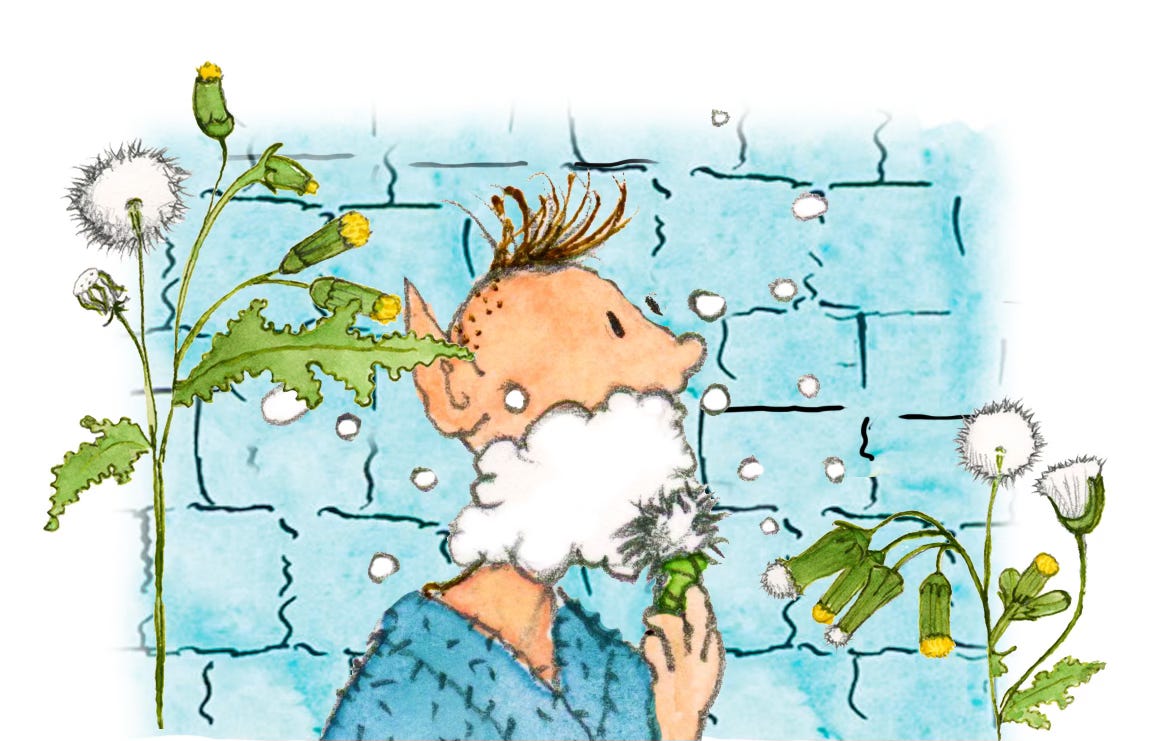
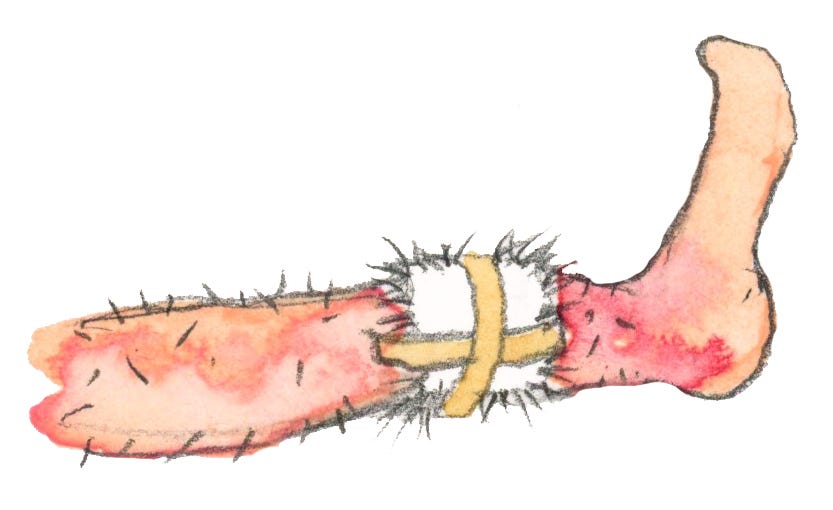

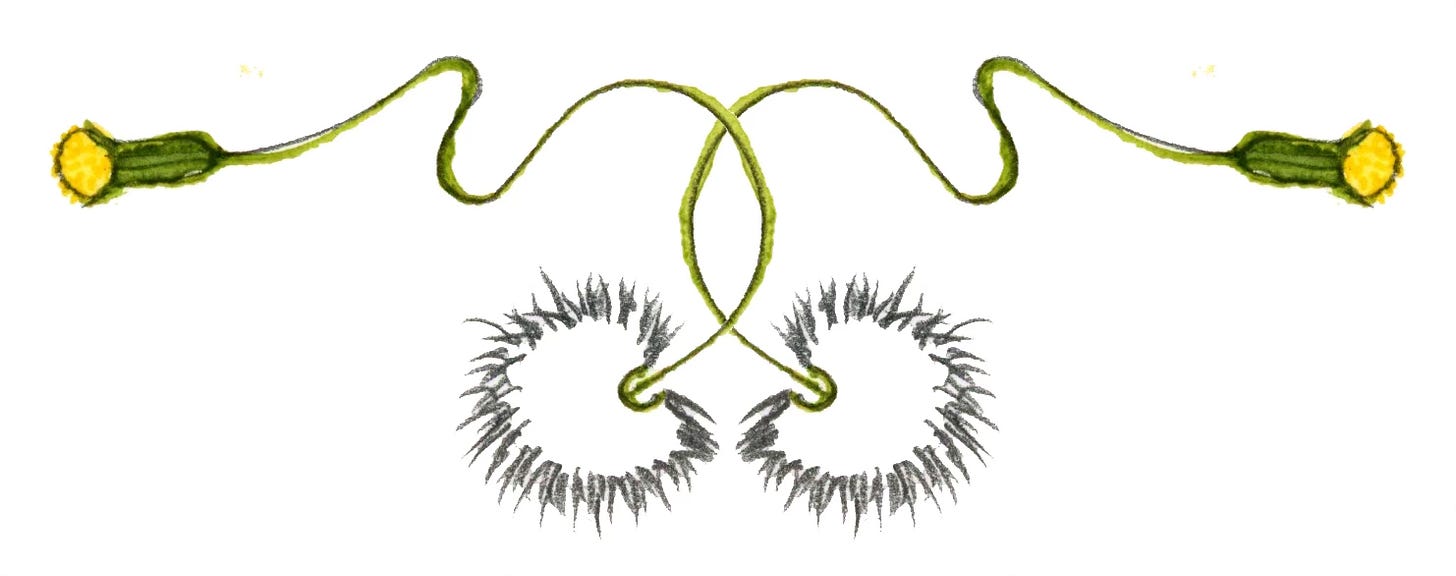
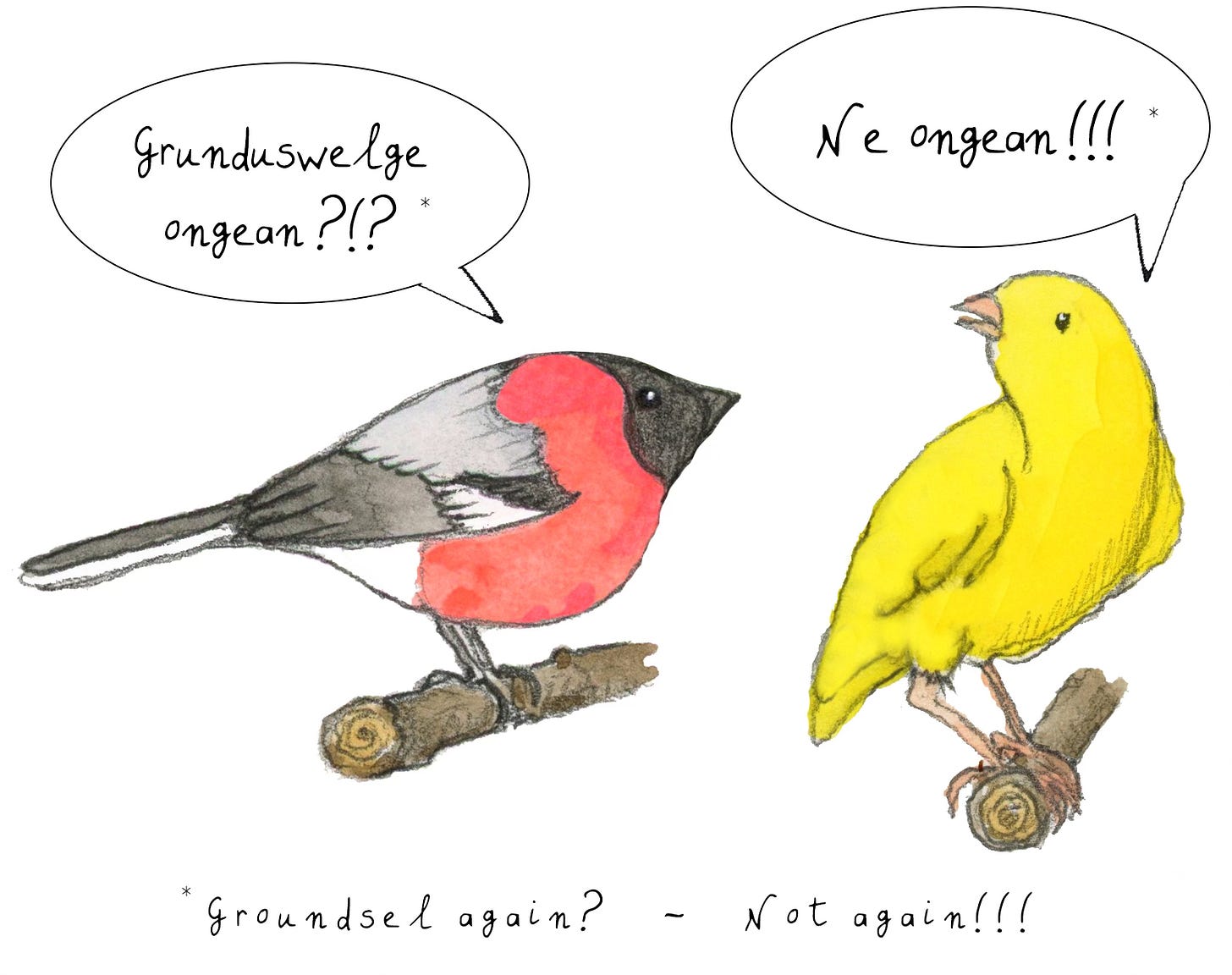
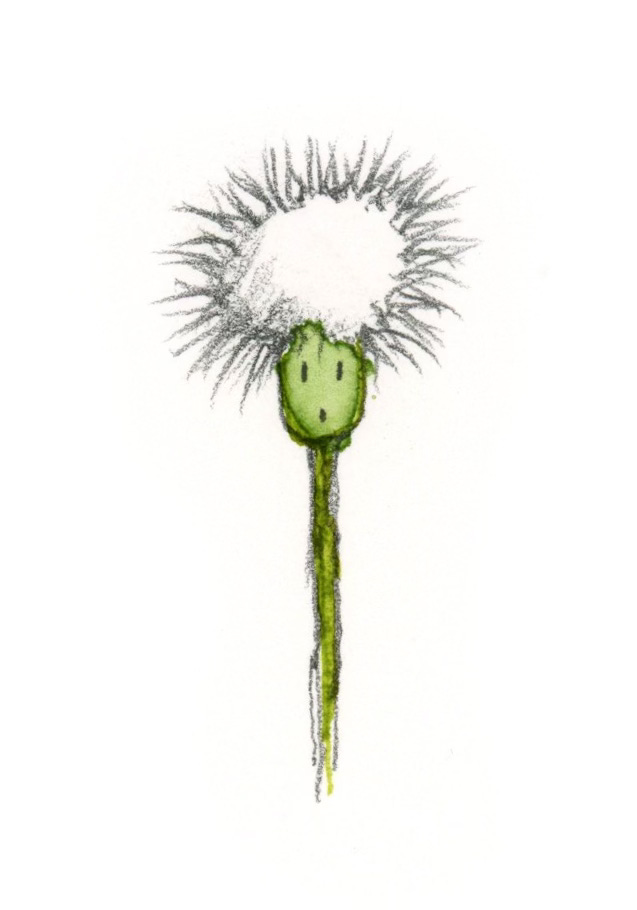
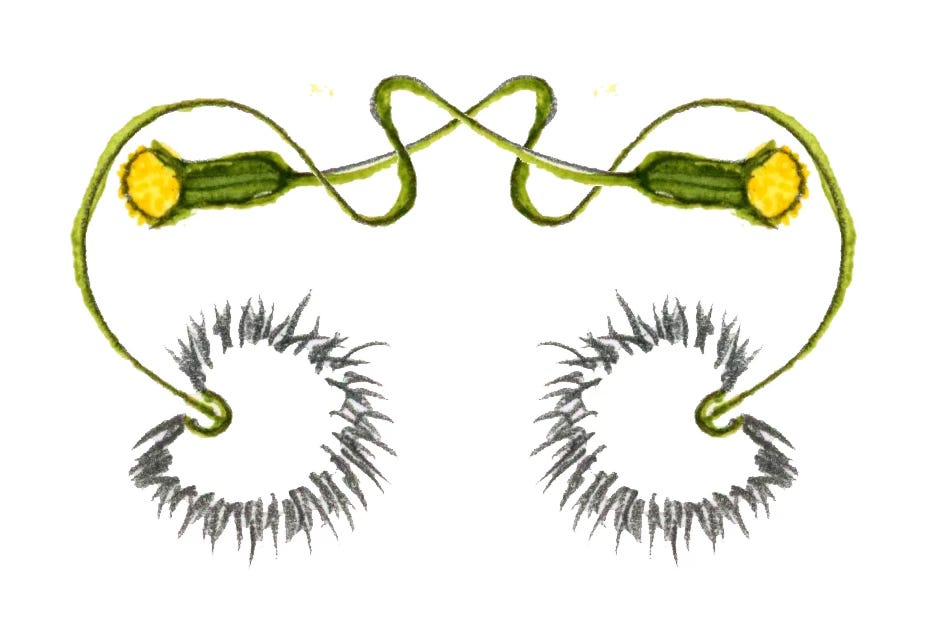

Leuk weer! Klein kruiskruid. Zou je in het Nederlands ook kabouterscheerkwast kunnen noemen 😀
Grote pluizige distels doen mij ook altijd aan scheerkwasten denken.